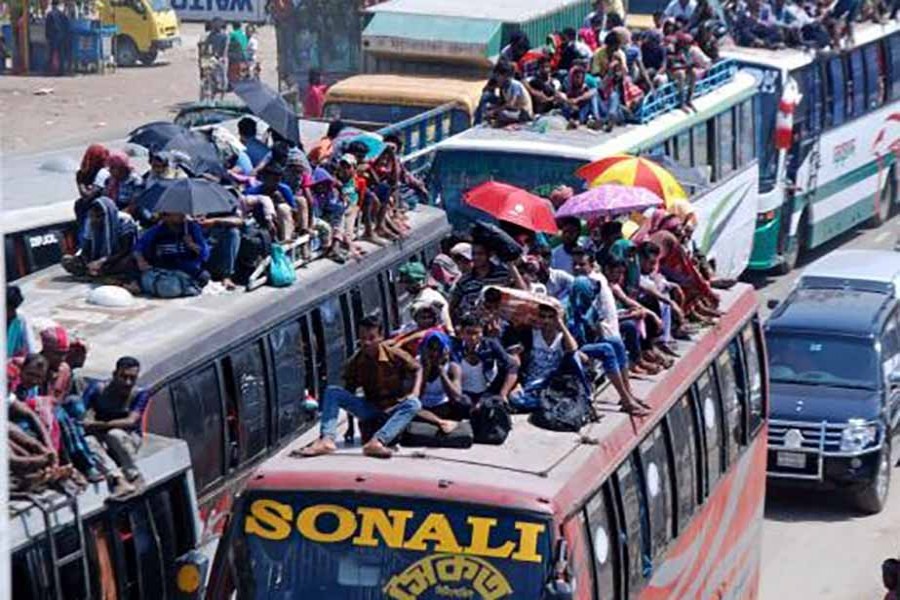The pervasive anarchy besetting traffic movement in the country's big cities including the capital is spreading to the highways, not quite unsurprisingly. It could not have been otherwise, since there is a theory called the domino effect. The reckless driving, compulsive jaywalking and the concomitant public woes and casualties inside the cities carry a diabolic force. The highways cannot resist its consequences. The menace comprises the distressing spectacle of low-speed non-motorised and semi-motorised vehicles plying the highways alongside fast-moving automobiles. To call the sight of rickshaws, easy-bikes, baby-taxies etc., precariously making way through high-speed vehicles atrocious is an understatement.
Given the potential for terrible road accidents coupled with fatalities, the free movement of the non-mechanised vehicles readily evokes a feeling of dread. Along with the criminal arrogance on the part of a section of vehicle operators, the spectacle also speaks of a lackadaisical attitude of the authorities concerned towards the hazard. The nonchalance of the latter comes to the fore owing to the fact that an unequivocal government directive on highway use is reportedly in force. The directive asked the Bangladesh Road Transport Authority (BRTA) to implement a ban on vehicles running at speed below 60km per hour on the highways. That it has fallen on deaf ears is evident from the terribly chaotic scenes prevailing on the highways.
What then has stood in the way of implementation of this all-important directive? Are the errant vehicle operators too reckless and rustic, and also ignorant of the hazards of accidents, to be reined in? If this is the case, the imperative of enacting a law on proper highway-use deserves to be in the national focus. In the perspective of the whole traffic movement situation, legal loopholes appear to rule the roost. On top of them, some basic must-dos are found wanting. The deterioration would not have come to this pass had some essential rules been in place. In the scene ranging from the in-city traffic movement to that covering the country's ever-increasing network of highways, few in the relevant agencies are found anxious enough to work out pragmatic solutions. Nothing could be more distressing. Against the backdrop of expansion of the highway coverage, the authorities' cavalier attitude towards the pervasive anarchy in traffic movement stands out with all ominous shades.
Not to speak of the long and short-distance highways in the developed world, even by the South Asian standards Bangladesh finds itself in a wretched state in the use of highways. Provision of separate lanes for vehicles with varying speed-limits is a preliminary condition for these roads. Meeting this requirement is normally ensured during the planning stage, with scopes for retrofitting. In some Southeast Asian countries, multi-lane and multi-layer expressways are found in operation with little hiccups. It is implied that enforcement of stringent traffic rules in the use of highways is a sine qua non for a country like Bangladesh. The greatest responsibility in this aspect rests with the law enforcement agencies. And both the BRTA and the Roads and Highways Department ought to be fully proactive.


